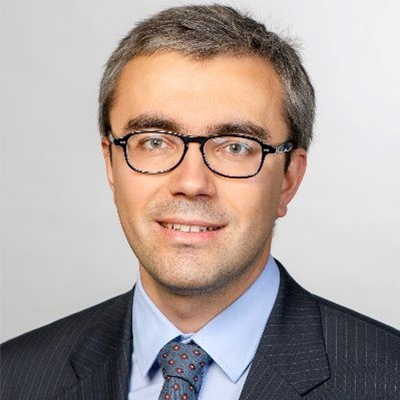
Professor Alessio Zaccone received a PhD in Chemical Physics from ETH Zurich in 2010. He served as a faculty member at Technical University Munich, at the University of Cambridge, and, currently, at the University of Milan. His active research interests include jamming and granular packings, the physics of glasses and amorphous solids, elasticity, phonons and continuum mechanics, topological physics, statistical mechanics, colloids, liquids and complex fluids out of equilibrium, and the theory of superconductivity. His awards include the following:
- ERC Consolidator Award of the European Union (2022)
- Fellow of Queens’ College, Cambridge (2015)
- Gauss Professor of the Göttingen Academy of Sciences (2020)
- Institute of Physics, Emerging Leader (2020)
- American Chemical Society I&ECR Influential Researcher Award (2017)
- Oppenheimer Research Fellow, Cavendish Laboratory (2011)
- Silver Medal of ETH Zurich (2011)
I will by reviewing the microscopic theory of linear elasticity in amorphous solids which, from first-principles consideration of non-centrosymmetry in the particle contact environment, leads to mathematical predictions of elastic moduli in quantitative parameter-free agreement with numerical simulations of random jammed packings [1]. This theory fully accounts for the extra non-affine displacements which arise due to the lack of centrosymmetry that leads to force imbalance in the so-called "affine" position, with characteristic negative (softening) contributions to the shear modulus entirely due to non-affine displacements.
I will then show how the theory can be systematically extended to linear viscoelasticity, again in excellent parameter-free agreement with mechanical spectroscopy (oscillatory rheology) in simulations of polymer glass rheology [2]. The same non-affine deformation theory is able to mathematically predict and explain the ubiquitous inverse cubic dependence of low-frequency shear modulus on confinement size for confined liquids and amorphous solids [3]. I will then show that non-affinity of particle motions gives rise to well-defined topological defects (dislocation-like topological defects, DTDs) which have recently been discovered in the displacement field of model amorphous solids [4] and later confirmed in [5]. The norm of the associated Burgers vector of these defects can be used as an accurate predictor of the onset of plastic flow and yielding of the amorphous material, and, in combination with Schmid's law, it can explain the phenomenon of shear banding via self-organization of DTDs in slip systems at 45 degrees with respect to flow direction [4]. Broader implications of a unifying topological field theory of liquids and the liquid-solid transition will also be mentioned [6].
[1] A. Zaccone and E. Scossa-Romano, Phys. Rev. B 83, 184205 (2011)
[2] V. V. Palyulin, C. Ness, R. Milkus, R. M. Elder, T. W. Sirk, A. Zaccone, Soft Matter 14, 8475-8482 (2018)
[3] A. Zaccone and K. Trachenko, PNAS 117, 19653-19655 (2020)
[4] M. Baggioli, I. Kriuchevskyi, T. W. Sirk, A. Zaccone, Phys. Rev. Lett. 127, 015501 (2021)
[5] Z. W. Wu, Y. Chen, W.-H. Wang, W. Kob, L. Xu, arXiv:2209.02937 (2022)
[6] M. Baggioli, M. Landry, A. Zaccone, Phys. Rev. E 105, 024602 (2022)